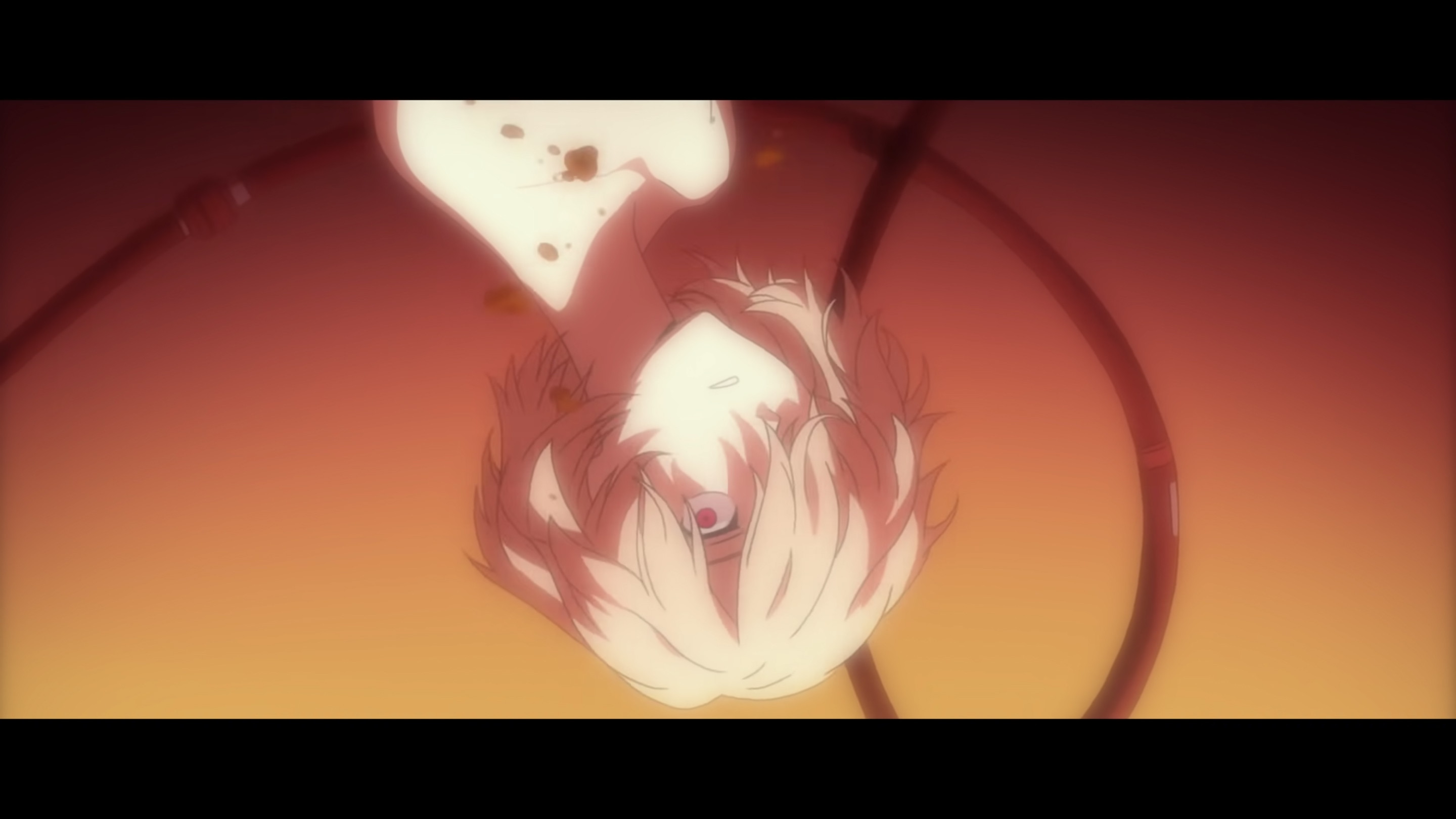
A note on safety: The following movie review undertook the strictest of safety procedures to watch the anime film in cinemas in Japan, including washing hands with disinfectant before and after, sitting in seats apart from others, going to a cinema outside of the busy metro area, and wearing a mask during the entire runtime of the movie. We strongly urge everyone to follow the recommended safety protocol in your country and always wear a mask when in public — not just for your sake, but everyone else’s as well.
In the spirit of the recent release of the latest (and final) Evangelion movie, we wish to talk about the momentous occasion in an honest, but respectful way for those outside of Japan who cannot see the movie yet. Here, you will find our totally spoiler-free review. Later, we will be posting a full spoiler-filled review for those who wish to read. Stay tuned!
If Evangelion: 3.0 You Can (Not) Redo is the tale of death, despair, and hopelessness, then Evangelion: 3.0+1.0 Thrice Upon a Time is the antithesis of that. It’s easy to see why the films were originally supposed to be seen together. Like a melody, they complement each other, with 3.0+1.0 building on the threads 3.0 left hanging. Maybe that happens in another world, but after nine years of waiting for the final Evangelion film, it feels like those threads were twisted into something different; something much greater.
Originally slated to release in 2008, it’s been a long road to the final Evangelion film, at least now as we know it. What we would have gotten back then, or even in 2015, is not the film that we got today, and I think that largely has to do with the film’s creator Hideaki Anno.
Anno once said that the Rebuild of Evangelion films was an “aim to walk towards the future.” 3.0+1.0 embodies that immensely, not just story-wise and animation-wise, nor even as a reflection of the anime industry as a whole. Rather, it’s Anno’s reflection on the series, and what it means to him through the eyes of Shinji Ikari.
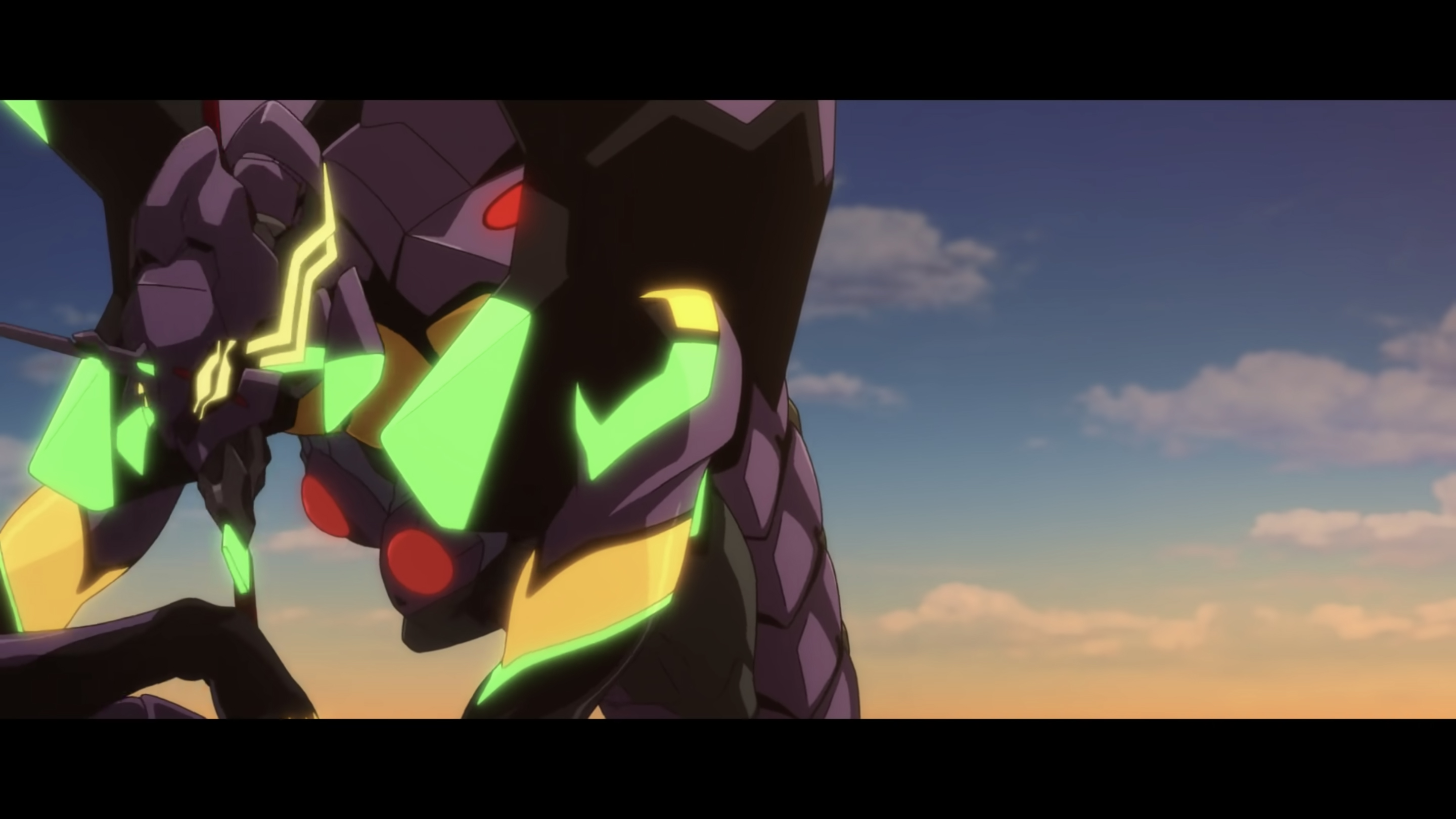
From the get-go, Evangelion 3.0+1.0 returns to the roots of what makes the franchise so eternal. We get to see the human aspect of Evangelion outside the headspace of Ikari, as well as see how humanity has survived through the near-apocalyptic events that frequent this universe.
All of it helps to ground the Rebuild films back from … whatever happened in Evangelion 3.0. As questions are answered, more questions arise, but that’s the nature of Evangelion. It isn’t Anno’s job to give all the answers; It’s his job to take the viewer for a ride, and with that, he delivers it in the most Evangelion way possible.
Know that if you’re a fan of Evangelion, the story and subsequent conclusion will be satisfying. Yeah, Evangelion: 3.0+1.0 goes pretty meta, as expected of a film that is inspired by the End of Evangelion, but there’s no tumbling down here.
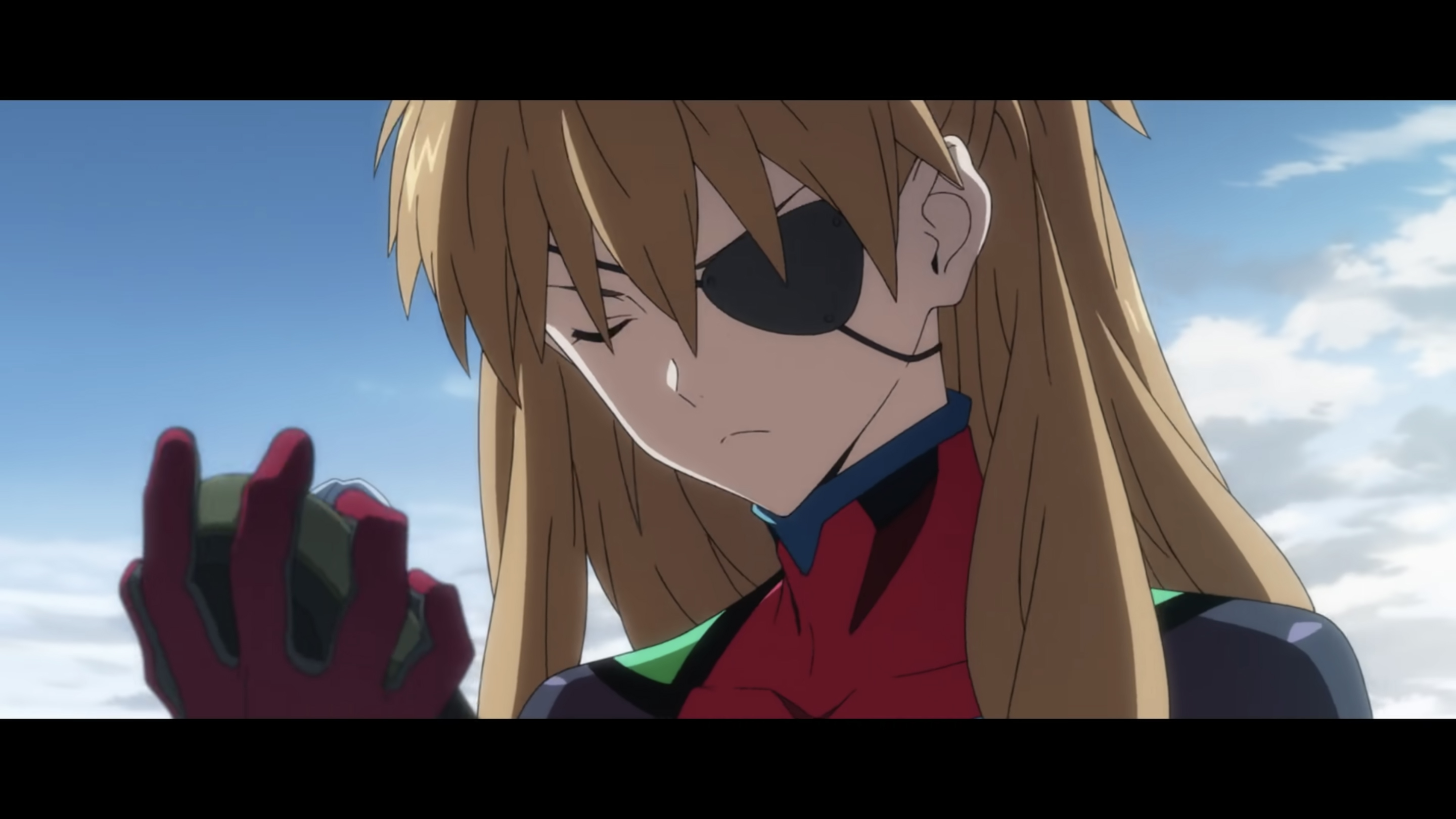
One of the sorer points of the film is the animation. While not bad, in terms of how far Khara has gone with 3DCGI is congratulatory the quality of the 2D animation and post-processing doesn’t really build on what we’ve seen in the previous entries in the series. For better or worse, the 3.0+1.0 films keep the same animation aesthetic.
And remember that Evangelion 1.0 came out in 2007. The time span between 3.0+1.0 and 1.0 is longer than between End of Evangelion and 1.0.
While the quality of the 2D animation has roughly stayed the same, the level of detail in the animation movement is as meticulous as always. Using the preview as an example, as the crew tries to put the USB in the plug, they fumble, putting it the wrong way around before fixing their mistake. That level of thoughtful level detail of the character animation is littered throughout the film through both the high-action moments and the mundane.
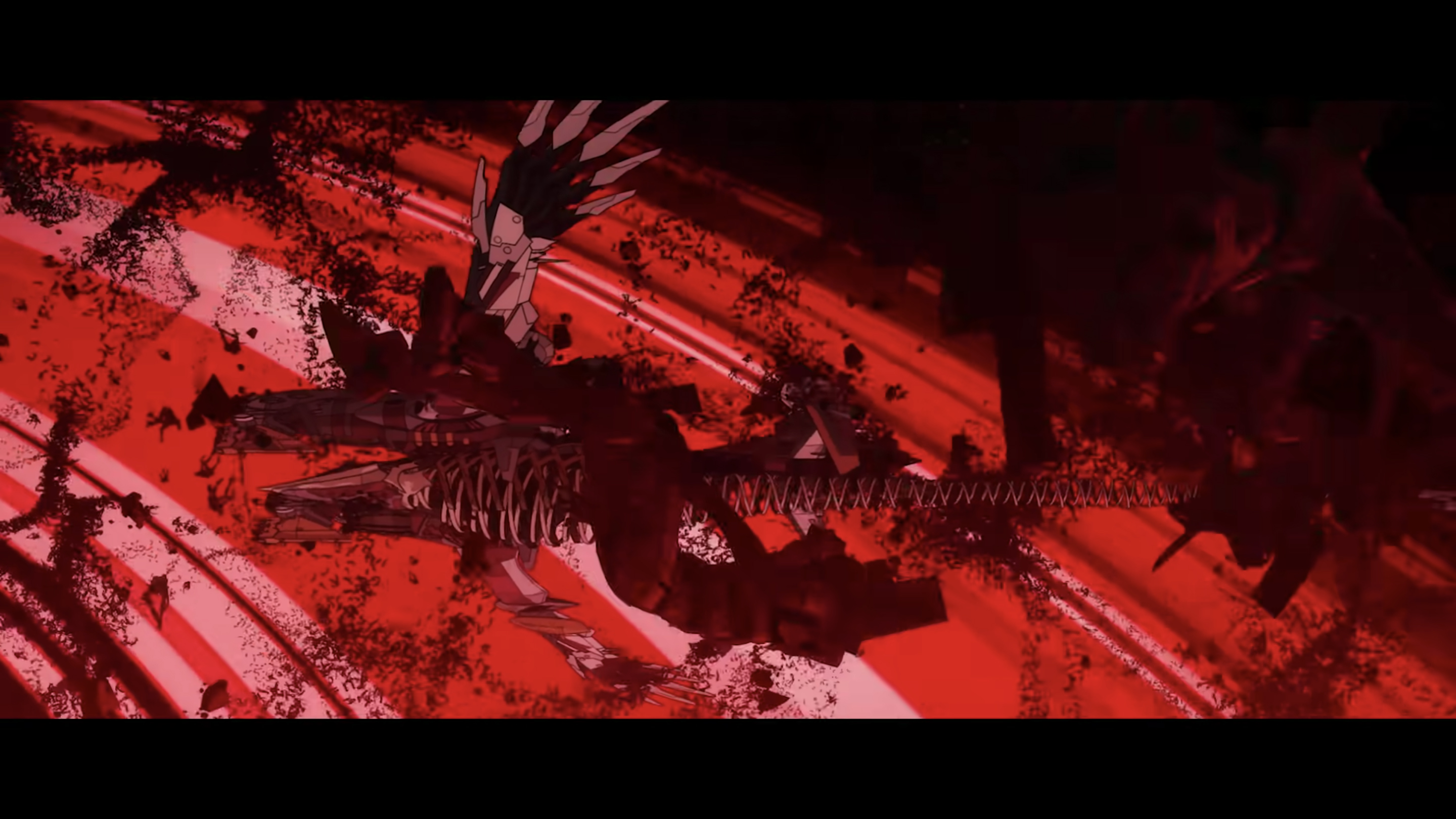
There are a few scenes that use the CG elements Khara is best known for to create some beautiful sun-lit landscapes, complemented by beautiful backgrounds. While Khara doesn’t go for the full blend of CG and 2D, the CG has very much improved since 2012.
Though, does that really matter if 3.0+1.0 is the peak of visuals for the most optimum visual experience of the Evangelion franchise? The iconic visual language that Evangelion has built over the last two and half decades merged with the red aesthetic that populated the visuals in Evangelion 3.0 helps bring the Evangelion identity to its peak.
The movie’s storyboarding work continues to truly be a highlight. The magnificent mise-en-scène continues to elevate the franchise to be some of the best scene direction in anime. As the characters converse – or refuse to in some parts– the way they’re placed in the scene, along with the color, the camera angle, and whatever mild animation is occurring, comes through just in the character’s body language and tone.
A preview of Hikaru Utada’s wonderful theme for Evangelion 3.0+1.0
I was lucky enough to watch the film in IMAX, and while the format didn’t help the animation look any better, the sound design was immensely heart-thumping, but not so loud that it drowned out the dialogue or music. From Mari taking on an “Angel” in Paris to the final sweeping shot, every sound effect reverberated through me as I took in what was happening.
One perfect example of this sounds design. There is one scene in which there are multiple conversations going on at once in multiple locations, in which the characters are melancholically processing what is happening around them during a rainstorm, much like a scene out of The Garden of Words. At no point did I miss a single piece of dialogue throughout the interactions, nor was I unable to hear any other sound effects or music. It was oddly calming for an Evangelion flick.
This brings me to the score of the film, once again composed by Shiro Sagisu. Evangelion is known for its great music (so much so that Anno “borrowed” it for Shin Godzilla) and is so recognizable that anyone in Japan knows the battle theme; that Timpani rhythmic beat is iconic.
Sagisu once again brings it home with some of the best pieces in Evangelion history. There are the usual tracks you will remember from past films, but some of them have been remixed and changed to suit what is trying to be conveyed. The music felt like it has evolved, taking inspiration from scores from the last decade in films like Mad Max: Fury Road. The sounds are distinctly Evangelion but just an evolved form.

One thing Evangelion: 3.0+1.0 Thrice Upon a Time makes certain, and something I couldn’t believe despite all the marketing messages is that this is Hideaki Anno’s true end of Evangelion. It may not be the last time we get an Evangelion-something, but this is the end of the franchise for Anno. The end, which brought a tear to my eye, perfectly encapsulated Anno’s feelings on the matter.
And for that, I thank him for pouring his heart and soul into the film, and I bid a big Bye-Bye, All of Evangelion.
And as promised, there was fanservice all the way to the end.
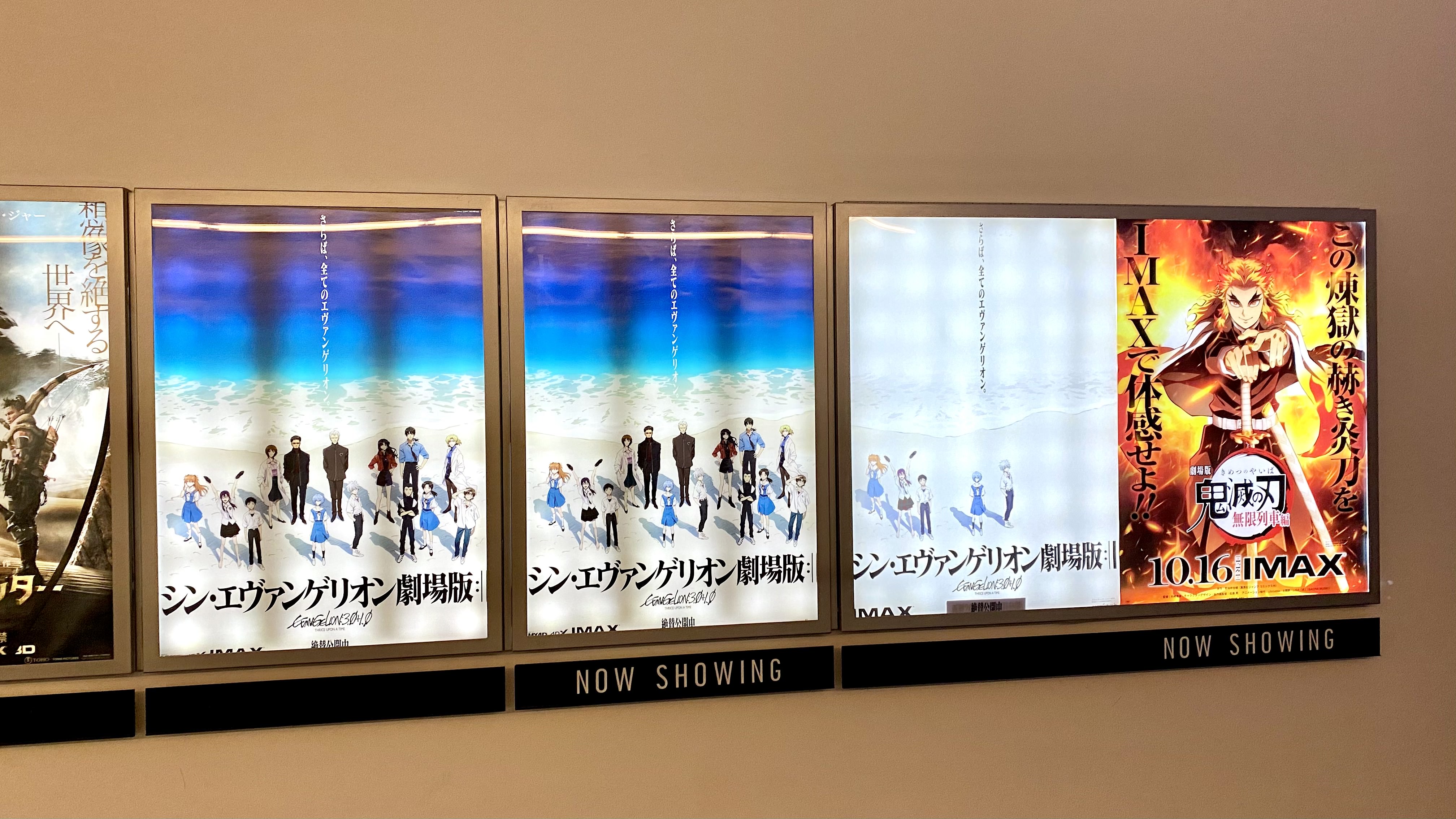
Evangelion 3.0+1.0 posters next to Demon Slayer (Photo: Daryl Harding)
There is much more to discuss with Anno’s final Evangelion film than what is written here. Shinji’s voice actor Megumi Ogata said that March 22 was the embargo on spoilers so stay tuned for our spoiler-filled review because we need to talk about that final part in the movie in some way.
Evangelion: 3.0+1.0 Thrice Upon a Time is currently showing in theaters across Japan, there’s no word on an international release at this stage.
Daryl Harding is a Japan Correspondent for Crunchyroll News. He also runs a YouTube channel about Japan stuff called TheDoctorDazza, tweets at @DoctorDazza, and posts photos of his travels on Instagram.
Do you love writing? Do you love anime? If you have an idea for a features story, pitch it to Crunchyroll Features.
Source: Latest in Anime News by Crunchyroll!

Comments
Post a Comment